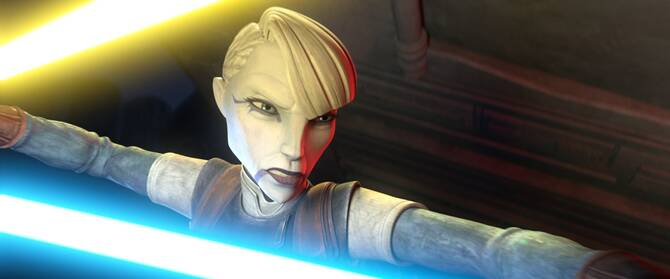Introduction
Asajj Ventress has long been one of the most compelling figures in the Star Wars universe. From her debut in The Clone Wars to her tragic arc in the extended lore, Ventress has occupied a unique space between villainy and redemption. In ‘Star Wars: Tales of the Underworld’, the latest addition to the animated anthology series on Disney+, Ventress returns with newfound depth and complexity. This blog explores how the new series redefines her character and what it means for Star Wars storytelling.

1. Reconnecting with Her Nightsister Origins
One of the most compelling aspects of Ventress in the new series is her reconnection with her Dathomirian Nightsister heritage. The series leans into her mystic roots, blending dark magic with character introspection, offering viewers a richer understanding of her identity beyond the Sith and Jedi dichotomy.
2. Emotional Depth Through Solitude
‘Tales of the Underworld’ shows Ventress not as a warrior, but as a woman haunted by choices. Her scenes of solitude and self-reflection are poignant, giving fans a rare look at her inner conflict and emotional trauma.
3. Subtle Redemption Arcs
Ventress’ portrayal in the series hints at small acts of redemption. Whether it’s helping a helpless outcast or showing mercy to a former enemy, these actions suggest she’s more than a fallen warrior—she’s someone still seeking meaning and peace.
4. A Deeper Exploration of Her Morality
Unlike previous portrayals, this series doesn’t force Ventress into a binary mold. Instead, it presents her as a morally complex character, allowing her decisions to speak volumes about the gray areas of the Star Wars universe.
5. New Visual Storytelling Techniques
The animation style in ‘Tales of the Underworld’ is darker and more nuanced, matching Ventress’ tone. From the haunting landscapes of Dathomir to the smoky alleys of the galaxy’s criminal underbelly, the visual palette reflects her inner chaos.
6. Revisiting Old Rivalries
In a surprising twist, Ventress crosses paths with familiar foes, including a Jedi who once tried to redeem her. These interactions reignite unresolved tensions, giving fans long-awaited closure or fresh sparks for debate.
7. Setting Up a Larger Narrative
While Ventress may not be the central figure in the entire series, her arc teases broader connections to future Star Wars projects. Could this signal a return in a live-action form or tie-ins with The Acolyte? Time will tell, but the seeds are clearly planted.
Conclusion
‘Star Wars: Tales of the Underworld’ proves that Asajj Ventress is far from forgotten. By peeling back the layers of her past, the series deepens our understanding of a once one-dimensional villain. Her journey is a testament to the franchise’s evolution—one where even the darkest characters can be illuminated in new, fascinating ways.
Curious about how other characters have evolved in the animated Star Wars universe? Check out our breakdown of Star Wars villains in animation.